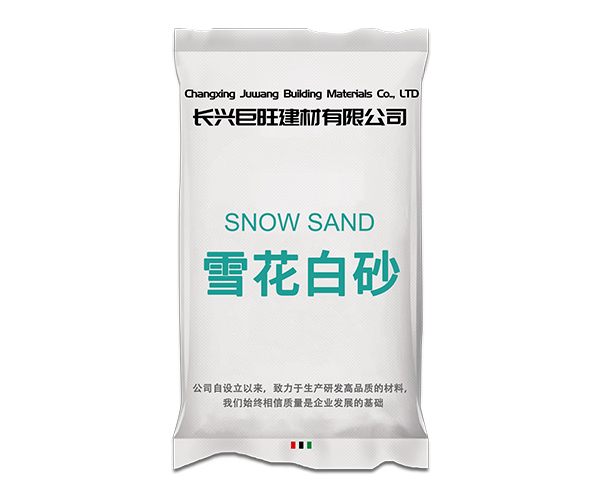Snow white sand The iron impurities are mainly in the form of muscovite, pyrite and iron oxides. The existence of iron impurities can reduce the use value of snow white sand and affect the product quality. In specific production, the raw materials of snowflake white sand need to be washed and deslimed first, and then mechanical cleaning, magnetic separation, flotation, ultrasonic cleaning, acid leaching and other processes are used to remove the iron element in snowflake white sand, so as to improve the use value of snowflake white sand. Then, how many meshes of snowflake white sand are suitable for mineral processing and purification?

The content of Fe2O3 in the snowflake white sand with particle size greater than 60 meshes increases with the increase of particle size, while the content of SiO2 decreases with the increase of particle size. The content of Fe2O3 in the+50 meshes snowflake white sand is as high as 0.0522%, and the content of SiO2 is as low as 98.32%. This is because the size of+50 mesh snowflake white sand exceeds the size of quartz particles. Therefore, there will be multiple quartz particles in a single snowflake white sand particle, and the iron bearing mineral inclusions between the snowflake white sand particles are not separated, resulting in an increase in the iron content of+50 mesh snowflake white sand.
Fe2O3 content in snow white sand with particle size lower than 180 meshes increases with particle size reduction, and SiO2 content decreases with particle size reduction. The iron content in snow white sand with - 300 meshes is as high as 0.0587% (three times as much as that in snow white sand with - 200+300 meshes), and the SiO2 content is as low as 98.81%. This is mainly because the size of the iron bearing minerals in the snowflake white sand is generally less than 0.01mm. When the snowflake white sand is crushed to 50 μ m, most of the iron bearing minerals with impurities in the snowflake white sand fall off and enter the - 300 mesh snowflake white sand, resulting in a high iron content in the - 300 mesh snowflake white sand.
The above data shows that the lower the particle size, the greater the impurity content, which is also the reason why snow white sand needs to be deslimed by classification before beneficiation and purification. In addition, the change trend of iron content in snow white sand with particle size is: when the particle size of snow white sand is greater than 60 meshes, its iron content increases with the increase of particle size; when the particle size is less than 180 meshes, its iron content increases with the decrease of particle size.
Therefore, in the process of mineral processing and purification of snowflake white sand, the raw materials should be washed and deslimed first, and then the snowflake white sand The particle size should be kept between - 60+180 meshes to reasonably improve the product quality and reduce the content of iron impurities in the snowflake white sand. Magnetic separation can be strengthened for snow white sand with particle size greater than 60 meshes and less than 180 meshes, which can reasonably reduce the content of iron impurities in snow white sand.



